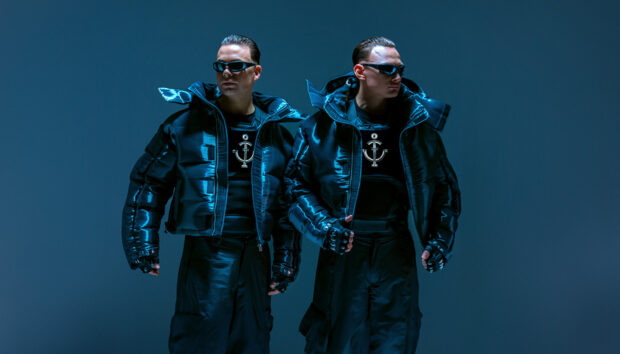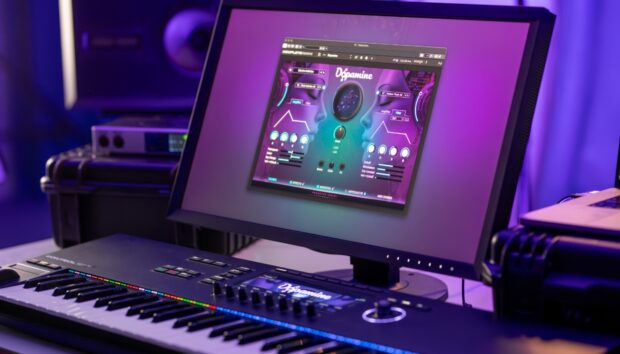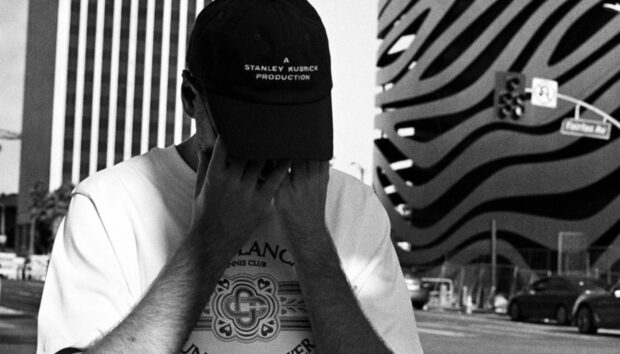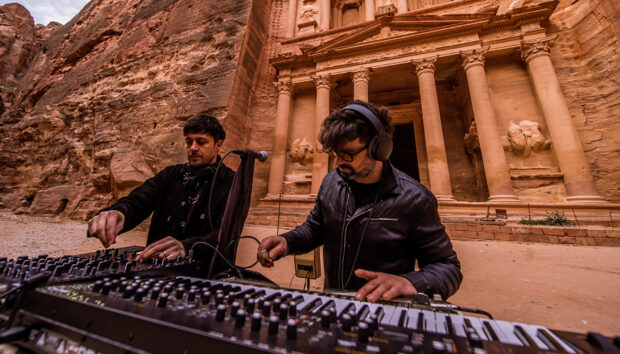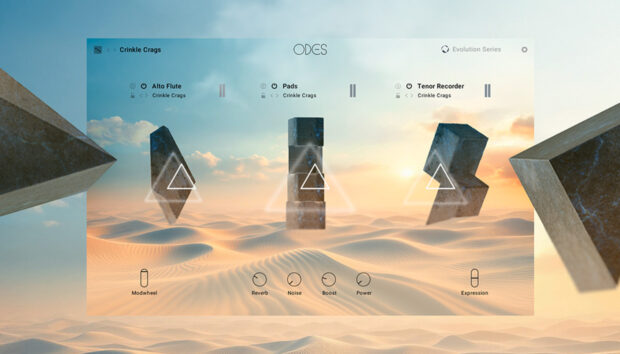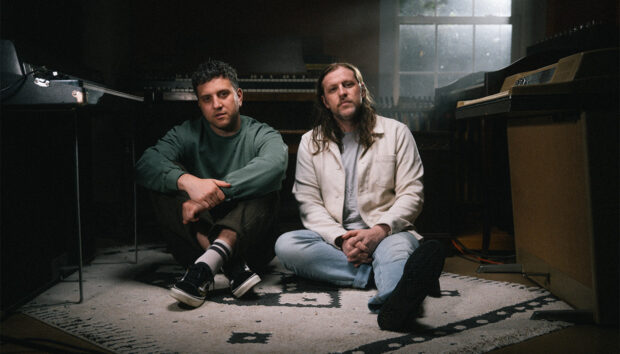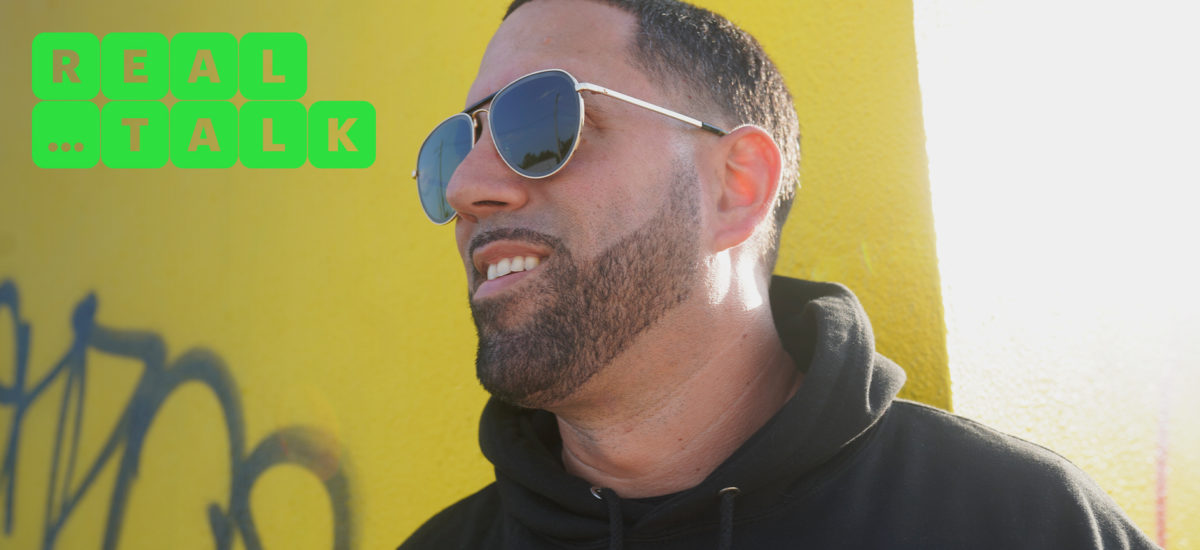
Daddy Yankee. Vico C. Ivy Queen. Wisin Y Yandel. Tego Calderón. Don Omar. Besides being some of the biggest names in Latin hip-hop and reggaeton, these global stars have one name in common: Paul “Echo” Irizarry. A native of San Juan, Puerto Rico, Echo is a veteran of the Latin urban music game – not only did he help engineer the first mainstream wave of reggaeton, but his production stamp can be heard all over Latin trap, new cumbia, pop and ballads. Most recently, he’s produced and mixed big hits for Ozuna, Becky G, Gente de Zona and Ir-Sais, to name a few.
Echo started off as an underground rapper but soon immersed himself in beatmaking.“I used to freestyle but I didn’t like many of the beats,” Echo recalls. “Since I knew a little bit about music, I started messing around with this keyboard that had a one-bar loop. Then I bought my first MPC-2000, a mic, and a hard disk recorder and started sampling and recording some of my friends who were MCing. We built a little studio in my dad’s furniture factory and that’s where everything started back in 1995 or ’96. Around that time, I had also had a very bad throat infection,” he explains. “I lost my voice for like a month and it came back different. I feel like it cut [all the frequencies] from 2k up in my vocal cords. I didn’t like how I sounded even though I had the lyrics so I kind of lost interest in MCing and committed more to producing.”
In the late 1990s, reggaeton was an emerging underground genre that was finding its voice, and very discriminated against by mainstream media and the Puerto Rican government. Sensing the pulse of the streets, Echo set up a studio to work with local artists – by the time reggaeton hit the global charts in 2004, he was already one of the island’s most in-demand producers, working on albums like Daddy Yankee’s Barrio Fino, Don Omar’s Los Bandoleros, Cosculluela’s El Príncipe, and Vico C’s En Honor A La Verdad, and winning multiple Grammys and Latin Grammys in the process.
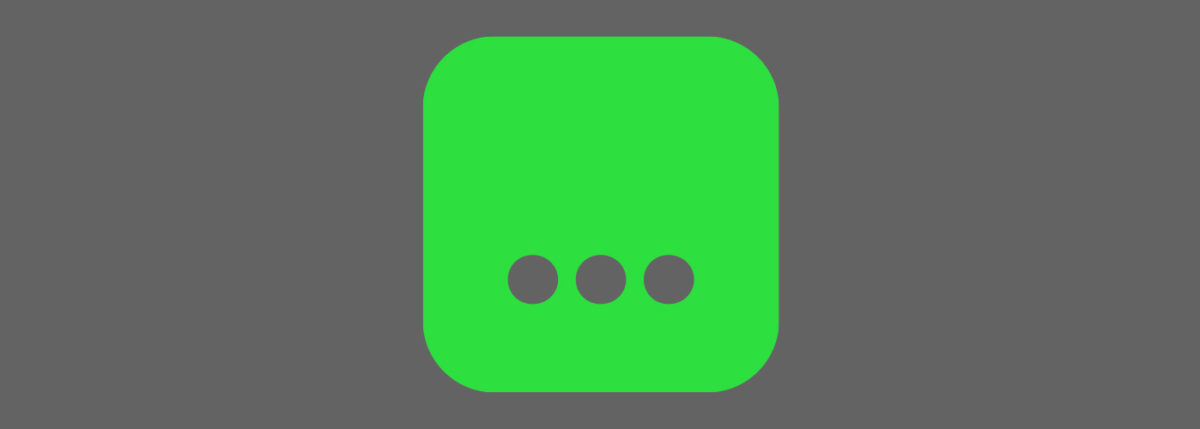
“Everybody recorded wherever back then,” Echo recalls. “Like in living rooms where you could hear what was happening on the street and the sound of the coquí, a frog that lives in Puerto Rico. We would call the salsa studios and they wouldn’t rent to us, even if we were going to pay for the time. Then they passed a law in Puerto Rico prohibiting reggaeton because of the dirty lyrics. And I said, ‘For this genre to grow, we need to do something more serious. This is the moment to really invest in a professional facility.’ Because whenever you tell people don’t do something, that’s gonna drive them to do it all over again and on a bigger scale.”
Flash forward to 2021 and Echo has his stamp on all corners of the Latin music landscape – mixing and producing everything from Latin trap and new cumbia to pop and ballads. Though he now has a spaceship-like studio in Miami, Florida, Echo still keeps echoes of the way he used to produce back then. “I cannot see a session that is all sequenced and quantized with no room for error,” he states. “That’s not Echo – that’s not my sound, that’s not who I am. Sometimes I play something myself literally. I’ll set a little Zoom mic up or open a mic on my desktop and just hit my desk like knock, knock, knock. Even if it’s a little percussion loop, every session has to have something that somebody with a heartbeat played.”
“There’s a huge difference between you making the music with your raw hands and clicking on the mouse to make a drawing of something that will play,” he continues. “With hardware, you’re doing an interaction of your life, emotion, rhythm, errors, imperfections. The live aspect could be you. Even if I don’t have a Maschine with me, I’ll do it with a MIDI controller, but I cannot just draw it in, even though I know where the notes should be. It’s just against my mentality, you know?”
On a recent episode of Real Talk, our IGTV show that runs every Thursday on Native Instruments’ Instagram, Vivian Host rang up Echo in Miami, Florida to get some insider production advice. Read on for tips on using ghost notes, EQing and how Echo uses NI products like MASSIVE, Analog Dreams, and KONTAKT instruments to make some of your favorite hits en español, and watch the entire Real Talk episode with Echo here.
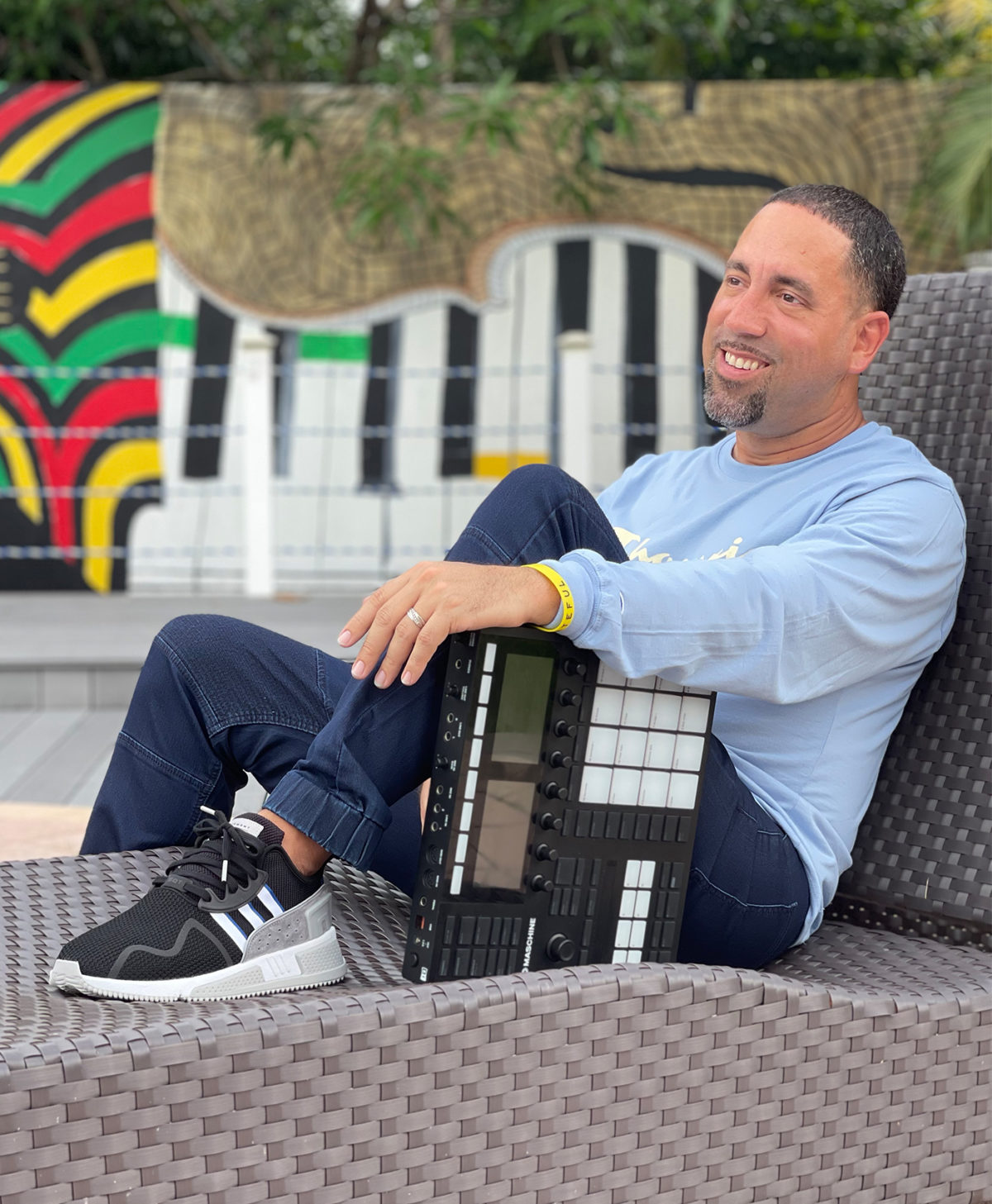
I was reading an interview with you where you were talking about doing overdubs with Daddy Yankee and recording in a hotel room off an aux cord from the video recorder. I guess you still need to have a production setup that allows you to go wherever the artist needs you and capture something you can shape up when you’re back in the studio.
In these times, our most important tool is our phone. You have to be portable and mobile. But I’ve been doing this since the time that you really had to carry a whole bag with a mic, a mic stand, a hard disk recorder. The first album that got me to win two Grammys was Vico C – he was probably the first guy to really rap in Spanish in Latin America, and maybe the world. Vico C was in jail and the label came to me and told me, “Vico C wants to do the album, but he told us you need to produce it.” I hadn’t even met Vico C. And that CD has a drawing from a sketch I did, because I was gonna go inside the jail with the lawyer and use the legal counsel time to record songs. Thank God that didn’t happen – we ended up doing the album in two weeks right after he came out – but even back then, in 2002, we were thinking about how we could record in a hotel but make it good enough quality for a record. I’ve done some crazy stuff to be able to take that inspiration and that moment from the artist and turn it into a final product.
I’ve definitely heard some tracks that were recorded on an iPhone from jail and you can’t even really tell, because the recording quality has gotten so good even with computers and phones. If you know what you’re doing after the fact with plug-ins and mixing then you’re good. Plus, I guess a lot of people are used to hearing this audio quality now.
Unfortunately, we’re in an era of fast consumption, so people aren’t paying as much attention as they were before to the quality or some of the aspects within the recording. But it’s about the song. If you have a great song, even if it’s distorted or it’s not completely properly mixed, it’s still a great song. That’s my mentality every time I work in the studio or a hotel room or in a car. (We’ve done beats and recorded people in a car while we were driving for hours.) Inspiration just comes or it doesn’t come and it’s about catching that moment from the artist that’s gonna be legendary.
What are the main things you carry with you now at all times to go from recording on the road or in the hotel to the studio?
At this point in time, it’s just having Pro Tools and some kind of UA Apollo [soundcard] where I can use all the emulations and record as close as possible to being in a studio with the right signal flow. And just having a mic that’s good enough. It doesn’t need to be a Sony for $12,000 — get a mic that’s transparent, that’s not gonna change the vocal too much. It’s all about getting the sound as close as possible as the way you hear it raw, just coming through to your ears. Also I take a MIDI controller and a little Zoom recorder with me a lot of the time.
It’s not noticeable, but most of my productions have some kind of live element that I record or sample, or that I caught from somewhere else, mixed in with the organic and the machine instruments. For instance, a hi-hat might have a coin dropping sound behind it or a shaker will also have the sound of me dropping a bag of beans that I recorded. I put in some stuff to make it sound not too completely clean because we’re approaching an era where people like stuff more filtered, more lo-fi, more dark. Those little details make your productions sound more complete and less fake. Anybody can just grab a Fruity loop and move the mouse and do a beat. It gives it that thickness, you know? Drop in a kick a little off on your fifth bar.
There’s a huge song we did for Daddy Yankee called “Somos De Calle.” And people write to me a lot saying, “The piano is off-time after the second part of the loop.” Yes! It is on purpose. It makes it not traditional; it makes you notice and it adds to the feel of it, the swagger, the whole suspense of the beat.
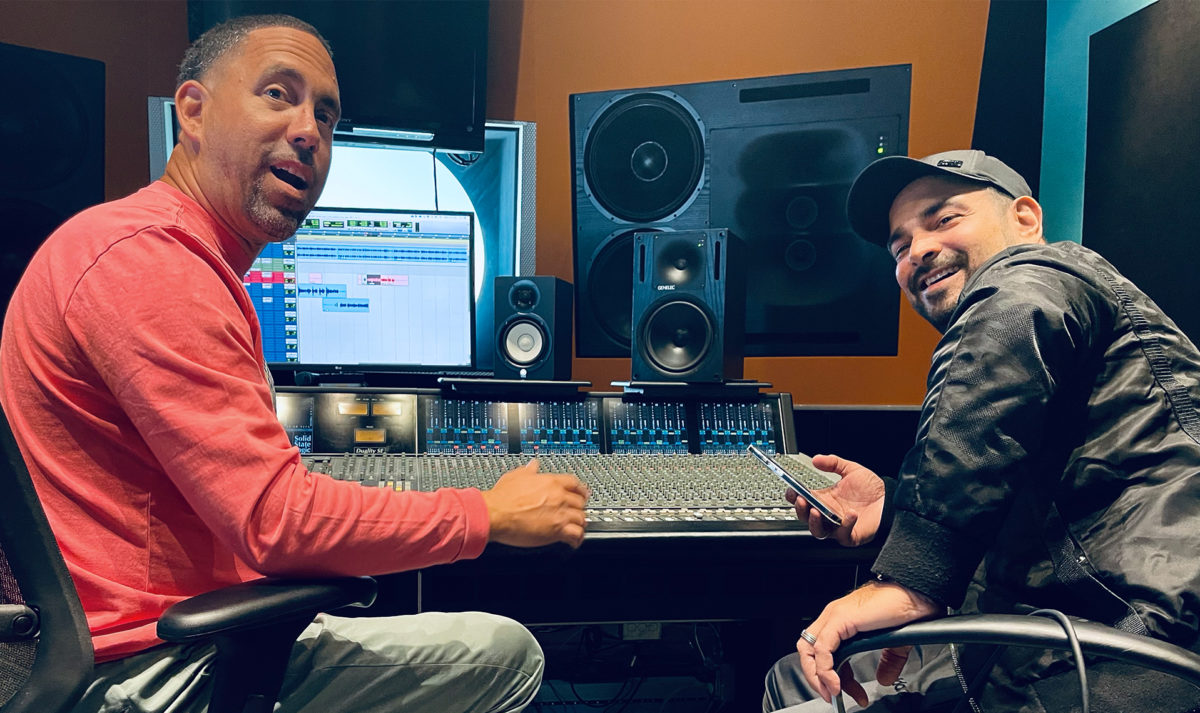
As you mentioned, you’re also a mix engineer. Tell me a bit about your process when you’re mixing tracks.
When I mix, I always start mixing the vocals first. To me, the main character is not the producer, it’s not the artist – it’s the song. I pay a lot of attention to the performance before starting to do anything. The song needs to give me some kind of emotion before I’ve started mixing, just by listening to the acapella; I need to envision everything else getting around it, but not on top or over it, you know?
I try to make the vocal sound like that person is singing to me, in front of me, and then add the effects and the stuff to make it interesting and not too linear; and then I make little details, the little punch phrases or key factors of the song, stand out. A lot of producers that also mix are so concentrated on their beat sounding great — and the beat alone is not what’s gonna sell a song. The acapella without the beat is not gonna work and the beat without the vocal isn’t going to do anything. So always keep that in mind: the song is the main character.
You’ve done so many different styles over the years. Reggaeton, hip-hop, salsa and nowadays you’re doing big Latin pop tracks like Becky G’s “Muchacha” or Ir-Saís’ “Dream Girl.” Can you talk a little bit about mixing reggaeton and Latin trap versus maybe a track like “Muchacha”?
I’ve been blessed that a lot of the music that I mix, I also produce or co-produce, probably 70% or 80%. That means I’m able to tweak a lot of stuff along the way because I know where it’s going. Mixing-wise, reggaeton is based on hard-hitting drums and bass that need to get you dancing, then everything else fits wherever it can fit. The root of classic reggaeton tracks like Daddy Yankee’s “Gasolina” or Don Omar’s “Dale Don Dale” is having those hard drums and bassline like Jamaican old school reggae. Trap is more about darkening the mix a little and using less instruments. In Latin trap specifically, the vocals are fairly in the front, because it’s a lot about the flow of the artist. As far as mixing this Ir-Saís song, there’s so little happening within that song that you need to make sure all of those little sounds or ghost sounds are there, because they imply an emotion. There was already a rough mix of it that I really liked. I just really enhanced it to sound a little bit pop, but sound catchy enough so no matter where you’re at, even in a funeral home, you will dance. It has some Afro elements and some beats reminiscent of a genre that started but didn’t grow too much named “Yankee samba” that uses a lot of tom drums for a sexy vibe. Ir-Saís is an amazing artist. I didn’t understand 90% of what he was saying because I don’t speak Papiamento, but that made me think, “I need to make this guy sound like he’s the best singer in the world” so people get it.
“Muchacha” was a different type of challenge. I was with Gente de Zona in the studio and we had an Afro/dancehall mix that was working, but didn’t clash with the percussion. Then we got the news that Becky G was going to be on it, which made the cherry on top. Gente de Zona is considered a tropical urban group, so I couldn’t just mix the song and forget about what they’ve done or what sound they’ve had to be successful. It was a process to keep the Latin vibe to the song but evolve their sound into something more urban, more international and more party-like.
I think that’s a great point about knowing the artists you’re working with – their back catalog, thinking about where they fit, and not wanting to alienate all of their current fans.
The job of a producer is enhancing and making sure that you get the most out of the artist – to satisfy them, the label, the fans, while making sure there’s still room to evolve and grow. You cannot go into a session with artists thinking about “your sound.” Your sound is going to be there no matter what, even if you don’t try to put it there. You cannot just go in and say “I’m gonna try and change this guy, because I don’t like how he sounds.” Whatever got that artist there is what also got them to be successful and work with you. You’ve always got to separate your ego from your work.This is not a business about singular people or the ‘I” – it’s about the teams, the writers and producers, all the work done by the marketing people, the people who made the video. You know, a lot of times if you liked the video, then maybe you’ll maybe go check out the song on Apple Music or Spotify; which is super awkward, but it’s the way that a lot of the kids are consuming music.
You were talking before about those “ghost notes” in “Dream Girl.” What are some of those hidden elements people can put in their tracks as a special secret sauce?
I use a lot of crazy stuff. After I do all the regular stuff like kick, snare, hi-hats, percussion, bass melodies, I sit down and I say “What can I do so it doesn’t sound too synthesized or too square?” Most of my hip-hop loops have a hidden snare somewhere with the pitch down like 30 or 40, super compressed, with a small short reverb – like a note between the loop where you wouldn’t expect it. If I have a kick that’s gonna do “boo-boom, boo-boom,” all the notes but the first one have some kind of weird noise on top, so it gives you that similar feel of a live drummer, where all the hits are not exactly the same.
And I always use those ghost notes, which is like if you were a live drummer… It’s the sound of the kick pedal, of the chair, of the gold chain hitting you. Noises. If it sounds too clean, too perfect, it doesn’t really sound real. I think people have an attraction towards real performance and organic stuff that is embedded in their mentality and that ear needs to be catered to, even with all this urban programmed music.
I probably use something from Kontakt on most of my production at some stage. I love Analog Dreams, the kind of retro synth. I often layer three or four synths. Even if I have an acoustic piano, it will have some kind of layer, very low, maybe 10 or 20% of the gain of that acoustic piano, just so it doesn’t sound symphonic and fills the background. With vocals, it’s also about doing the highlights and the little details. It’s about the artist doing those little responses and ad libs – that’s the stuff that people will sing out loud in the live performance. Don’t commit yourself to just doing what everybody else is doing.
Let’s say you had some coins dropping and you were putting that on the snare or the kick. Would you buss those together or would you literally just drop the audio on there and EQ?
Sometimes I just resample that stuff and layer it with whatever I’m using or I copy/paste wherever I feel like doing it; sometimes I take a whole loop, put it down to -12, cut the lows and then put on a slow-mo plugin to make it go half-time, just get it dirty and put it behind what’s clean. Aside from sound-selecting, the most important element of a song is the structure and the transitions. Not only with chords changing from minor to major or changing the progression on a bridge or pre-hook, but with the little elements: muting the hi-hat these four bars; or erasing half of the notes from the bass: or changing the pace on the snare for one part. People really react to that. Especially when you’ve got hip-hop artists that are gonna rap most of the way through the song, sometimes it’s a bit linear and it’s what you do with the beat – the pulses and different effects for their punch lines – that’s gonna keep people connected.
It’s about trying to do things as good as possible with your resources, but not trying to be perfectly clean. It’s more about the emotion, putting the sounds the right way. Sometimes distortion is good – we use saturation on a bunch of songs where the sounds are too plain and you want them to end up in a certain position in the mix. On vocals, I use saturation all the time, to really make them float on top of the beat.
You mentioned Analog Dreams. What else from Native Instruments do you end up using often?
I use Analog Dreams 80% of the time, no matter what I’m doing. It’s my go-to Kontakt instrument. I love the sounds and I love the fact that you have an A section and a B section. You can kind of tweak and do different layers just right in the moment. I can easily find a pad or key sound or synth that I will not find on anything else. Most of the time, the sound I create with Analog Dreams to start or work on my beats is the one that ends up driving everything else around it.
I also use Massive for synths or bass or little sounds in a track if it’s too empty. I usually find a little arpeggiator or pad or something that has movement in Massive and layer that close to what the vocal is doing – not overlapping, but enhancing it so people can really get the hook in their brain. I have like 20 synths and literally over 25 terabytes of samples but the reality is, I probably use less than 3% of that 90% of the time. You don’t want to lose your creativity or the idea you’re trying to develop trying to find the perfect sound – by the time you find that, you might have forgotten what you were gonna do in the first place.
When I’m doing something symphonic, I will go into Kontakt, pull up some of the Session Strings or the horns, play the first sound and get the idea down. I’ll play for like 10 or 15 minutes and record it, figuring out different loops, messing up, doing stuff that’s horrible. But then I’ll go back and put together the good pieces and start to figure out the chords, the progression, the scale, and start tweaking it. I don’t like software dictating to me what can be done. For instance, a lot of times if you have the quantization on a black note and it comes out wrong, then you missed the idea you played and you can’t get it back. That’s why I probably don’t have quantization on most of the time, unless I’m doing drums.
I just use a mix of the new technology and the older stuff that worked for me when none of this existed. I didn’t get to know Pro Tools until like 1999 or 2000. Before that literally, we were just recording to an 8/16 channel hard disk recorder and no Autotune, no Melodyne – like, let’s pray for this person so they really hit the note. We just had to work on it until we got it right. It teaches you to appreciate all these resources but not only rely on them, you know?
I think that kind of time period when there wasn’t software that automatically fixed things also made people better live performers because they had to practice more, they had to try to hit the note right every time.
100%. And not only that, but from the mixer standpoint, we will do a mix that stands up – not do it halfway and say, “Let’s do revisions a week from today.” A week from today, we’ve done 30 more songs. The necessity of doing it right the first time leaves no space for mediocre thinking. Saying “They’ll fix that in the mixing stage” or “Don’t worry, we’ll use Melodyne” opens the gap for people to be less professional and less good in the moment when, ironically, there’s way more money to be made for your talent than there was back in ’98 or the 2000s.
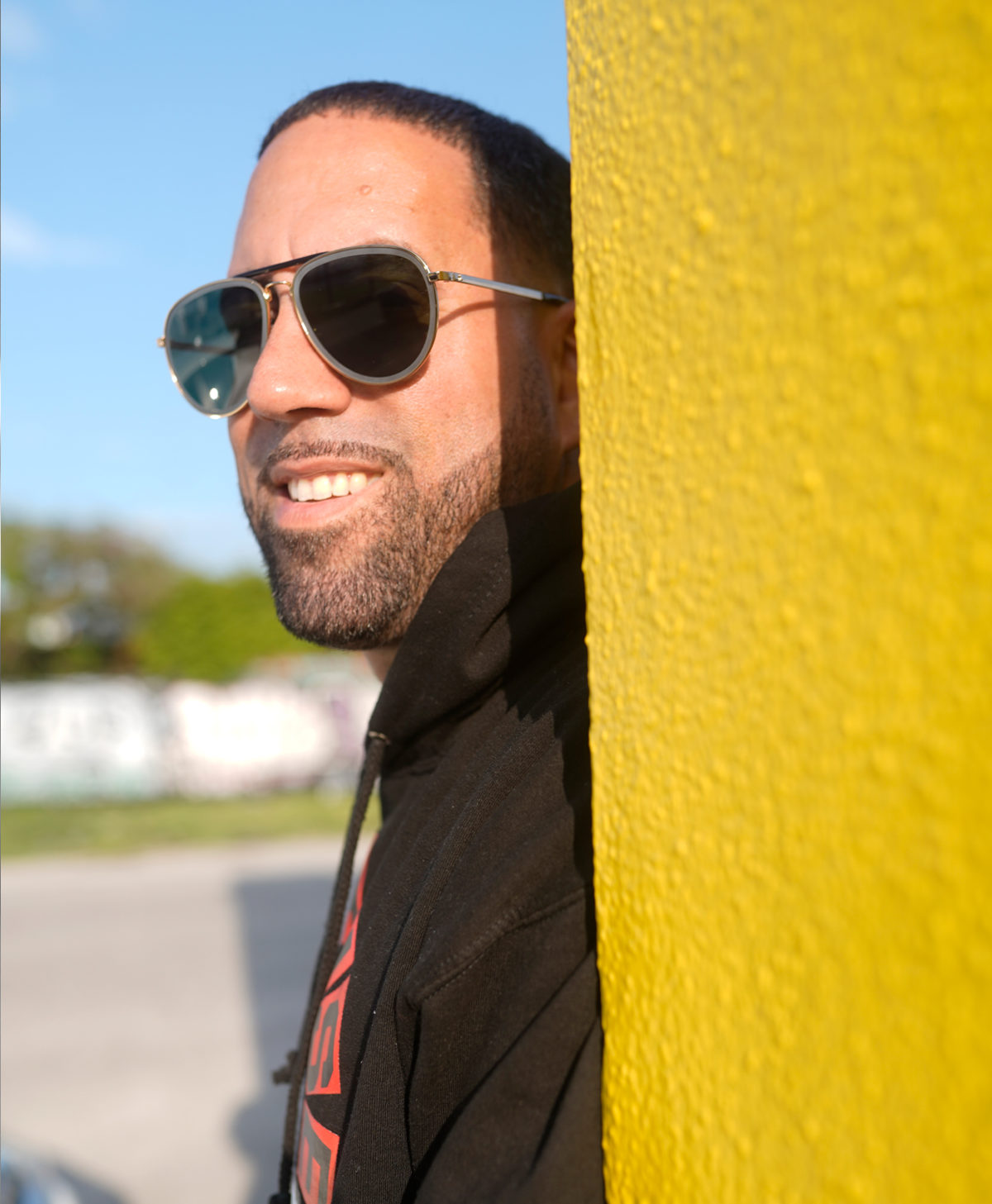
We’re gonna take a couple questions from the chat before we get out of here. I see Tostones wants to know, what plug-ins do you use to make the drums and the bass pop?
I have some analog gear as well, but if we’re talking about plug-ins, here’s what I use on all my drums: the Summit Audio TL100 compressor, the SSL bus compressor plugin or hardware unit (Warm Audio does a great unit also), and the Maag EQ, which I put on all my drum busses to make it really stick and to make sure the loop sits where it needs to after I mix everything. You can give more air, take away muddiness or get more punch just with the simple five frequencies.
I use the Fabfilter. I really like the SSL EQ, either the one from Waves or SSL directly. When I want to keep a little cleaner sound, I use the API stuff; when I want to look for a more nitty gritty colored sound, I use the Neve. But I think EQing is about understanding what you’re doing. If you’re starting out, I recommend the Fabfilter stuff because it will let you audition the frequency you’re at, and literally see how the frequencies are moving. You can train your ear to understand and you can sweep it around and see and hear the frequency that’s moving with it so you get to become a better mixer. I use it on all my sub mix busses and most of the time on my master because there are sometimes frequencies that resonate or stick out. You can get really super surgical with your frequency band and what you’re doing.
Riley wants to know what you think the future of Latin urban music is going to look like in the next two or three years?
People are definitely gonna bounce back from this COVID crisis with an anxiety to discover new things as far as enjoyment and entertainment. I really see all these Afro rhythms and Afrobeat happening. I also think the Brazilian funk and Brazilian elements are going to be integrating a bit more. Right now I’m working on a huge song titled “Don Booty” that’s reggaeton mixed with Brazilian funk. The whole barrier that Anglo and Latin music had — which the success of “Despacito” kind of erased — is just gonna keep disappearing more. I think music should be universal; you don’t have a separate pair of ears for Spanish music or vice versa. I think the Latin world is gonna keep looking for more international integration of elements. All those crossover songs are going to keep happening. The future looks amazing, as long as it keeps integrating instead of separating.
Take us out with one story about one of your favorite studio sessions of all time, or one of the weirdest or craziest.
Wow, there are so many! Okay, when we did “Bandoleros” — which is probably one of my top three biggest songs — we recorded Don Omar and then we recorded Tego. We spent all day in the studio. We started talking about the song around 6pm and we started recording around 4am. We recorded very, very late. The lyrics were on point, what they wrote was incredible, we were all thrilled. Don Omar left literally to go straight to court; what this song talks about was really happening with Don Omar in his life. He had really been arrested and they were doing some weird stuff in Puerto Rico to send him to jail and it wasn’t fair. Then Tego recorded and everyone left.
I’m still in the studio listening to Tego and I say, “You know, he sounds too tired. It’s Tego, but it’s not Tego. He can do it better.” But how do you tell Tego Calderon at the peak of his career that he’s off? It’s like Quincy Jones telling Michael Jackson, “It’s amazing, but I really think you should do it again.” I had this internal fight and I couldn’t sleep. At 9 or 10am, I called Tego and said, “I really think this song is gonna be big. You killed it. But I really think you need to record again fresh, because you’re gonna sound better.” And he was mad like, “You’re crazy. I got a flight today in like four hours. It’s perfect the way it is.” I told him, “Let’s do something. Come to the studio and you listen to it. If it’s perfect, ignore me completely. Don’t work with me again if you want. But if you can do it better you’ll figure out what to do.” I took a huge risk but it was my responsibility. I was the last line of defense. Once the guys were gone, I needed to mix it and it was going to come out. I convinced him to come to the studio, and he heard the first four bars of the song and he put on the headphones and I recorded everything again. And look at what the song became. So sometimes those crazy calls need to be made by the guy in charge, which is the producer. And the producer is who’s gonna have the most liability if the track fails. It was a crazy experience that made me gain more confidence in making the right calls in this process. Doing music is the easy part.
That was an amazing story! I was just listening to “Bandoleros” earlier and thinking about how enduring that song is – I still hear it all the time in the streets and on the radio.
It’s been a real blessing and a huge honor to be a part of making that with Diesel, who was a producer that was part of my team at that time. I’ve always looked at what I can do that will make a difference. If I’m just gonna do the same thing that anybody else would have done, it kills the whole point of me being there in the first place. I have that mentality on every project I work on – even if it’s a small, unknown artist, someday they’ll be known, if I do my work correctly.
Keep up with Echo on Instagram and check out his Behind the Boards playlist on Apple Music. To send demos to Echo, hit Demo@theechoteam.com.
Watch the entire Real Talk episode with Echo here: https://www.instagram.com/tv/CEF-ctbnqvy/
See all the episodes in the Real Talk series here: https://www.instagram.com/nativeinstruments/channel/
Real Talk, hosted by Vivian Host (@stareyezzz) is every Thursday at 1PM Pacific / 4PM Eastern / 9PM GMT on @nativeinstruments Instagram Live.









